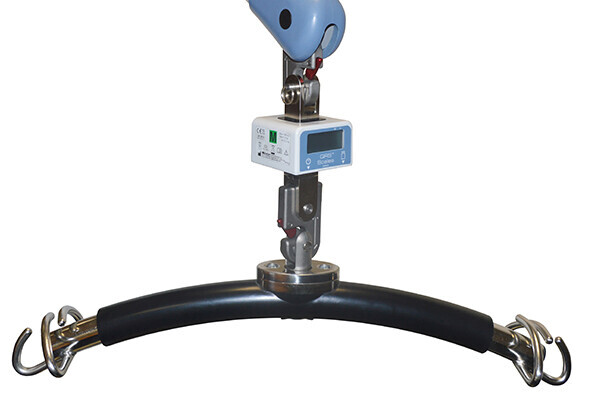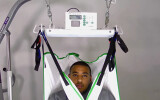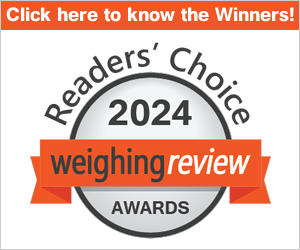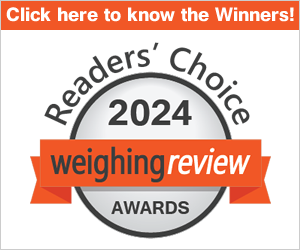Solent Scales Services Ltd. (United Kingdom) - Weighing bedridden patients or those unable to stand can be challenging.
Securing these readings is vitally important and in extreme cases a matter of life and death. Even so, it’s important to do so in a dignified manner, wherein both the user and practitioner feel comfortable.
Hoist scales are arguably the best means of achieving that happy medium.
Unlike traditional products, they do not require individuals to stand on a scale, nor exert any downward pressure onto one.
In that respect they are the opposite of floor scales, but in no way inferior.
You’ll find hoist scales in hospitals and care homes across the world, such is their importance within the medical sector.
In this article, we’ll explain how they’re used and highlight some key benefits.
Quality Checks:
The first thing to point out about hoist scales is... the best models are Medical Device Directive (MDD) approved. Since 2015 this has been a mandatory requirement for CE markings on medical machinery used within the European Single Market. And yes, that still applies after Brexit!
In short, this means the component has been assessed according to class, risk and intended application – satisfying all checks and balances in that regard.
When lives are quite literally at stake, no chances can be taken.
That’s why it’s equally important your chosen hoist scales are Class III approved.
We’ve written extensively about this certification, which acts as the ultimate quality check.
As a reminder, any device ‘used in the determination of mass in the practice of medicine for weighing patients for the purpose of monitoring, diagnosis and medical treatment’ is subjected to stringent verification tests before being given the green light for use within a medical environment. Said tests focus primarily on accuracy and reliability, for obvious reasons.
MDD stamped and Class III approved hoist scales can be trusted if used for diagnosis and/or treatment, providing peace of mind.
The Weighing Process:
As the name suggests, hoist scales are quite literally attached to a hoist, simplifying the process of weighing bedbound patients or those who cannot be weighed in a chair.
Crucially the sling that a patient is placed into and which is fundamental to the whole operation, is attached to the bottom of the scale as opposed to the hoist.
Here’s how to use hoist weighing scales – sometimes referred to as Hoist Weighing Attachments - safely and correctly…
1. Firstly, the hoist itself should be positioned within easy reach of the patient.
2. Next, you should attach the scale to the hoist, clipping built-in links to hoist hooks (or links) placed across the spreader bar.
3. Once attached, select Zero on the interface and ensure 0.00kg is displayed on screen.
4. After this, you will need to attach the patient sling to the hooks built on to the end of the scale.
5. The above will add weight, so it’s important to Tare this off using the button of the same name.
6. Once that initial weight has been cancelled out, it’s time to help the patient into the sling.
7. This stage can often see numbers fluctuate on screen, given the sudden movement. It’s important to stabilise the individual before selecting the Hold key, which will then home in on a specific weight unit.
8. At this point you should resolve not to touch the scale as this could influence final readings, leading to inaccurate weighing.
9. The final step of hoist weighing is to make a note of the measurement shown on screen, either in a handbook or digitally, using Bluetooth to transfer the results to a computer or handheld device.
A relatively straightforward process, it’s one that can be picked up relatively quickly by trainee nurses and care staff.
In an ideal world individuals would be weighed using the same apparatus every time. Unfortunately, this is not always possible, which necessitates some pre-planning.
Different equipment will likely produce different readings, leading to discrepancies that could undermine a weightloss plan for example.
To guard against wildly contrasting results and apply much needed context, a note of the exact model utilised should be made in patient records each time they are weighed.
Benefits of Hoist Scales:
It goes without saying, hoist scales bring with them a host of benefits welcomed by patients and healthcare professionals alike.
The most obvious, but most important, is the fact they allow for patients to be weighed without standing. Yes, other products do likewise – most notably chair and bed scales - but these tend to cost far more. Hoist scales are certainly a cost-effective alternative to bed scales in particular.
They also happen to be highly transportable. Lightweight, nearly all hoist scales are delivered with accompanying carry cases, meaning they can be stored away and moved from one location to another with next to no effort.
Then there’s the sheer compatibility of these models. Indeed, a typical hoist scale will lend itself to practically any hoist sling support. They hook onto spreader beams the way a coat hanger does a wardrobe rail – allowing for great flexibility.
As mentioned, some pre-planning is required here. Fixing points on hoists may differ, causing your hoist scale to pull in different angle to what you’re used to. Another direction of pull could skew what you’d consider typical readings.
On the whole however hoist scales are an obvious solution for weighing those with limited mobility. The option to do so accurately and sensitively is one all parties welcome, hence their enduring appeal.

































Interested? Submit your enquiry using the form below:
Only available for registered users. Sign In to your account or register here.